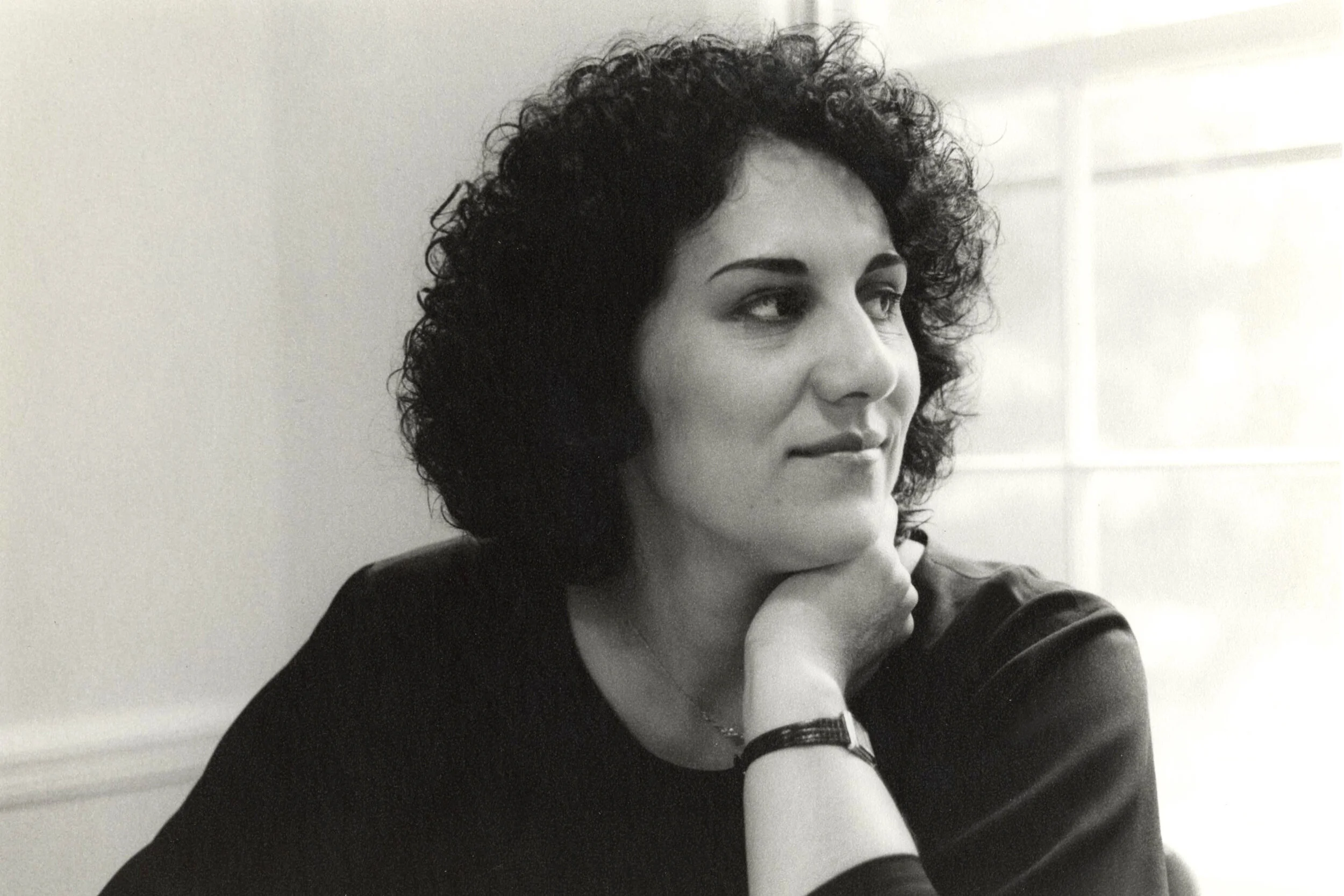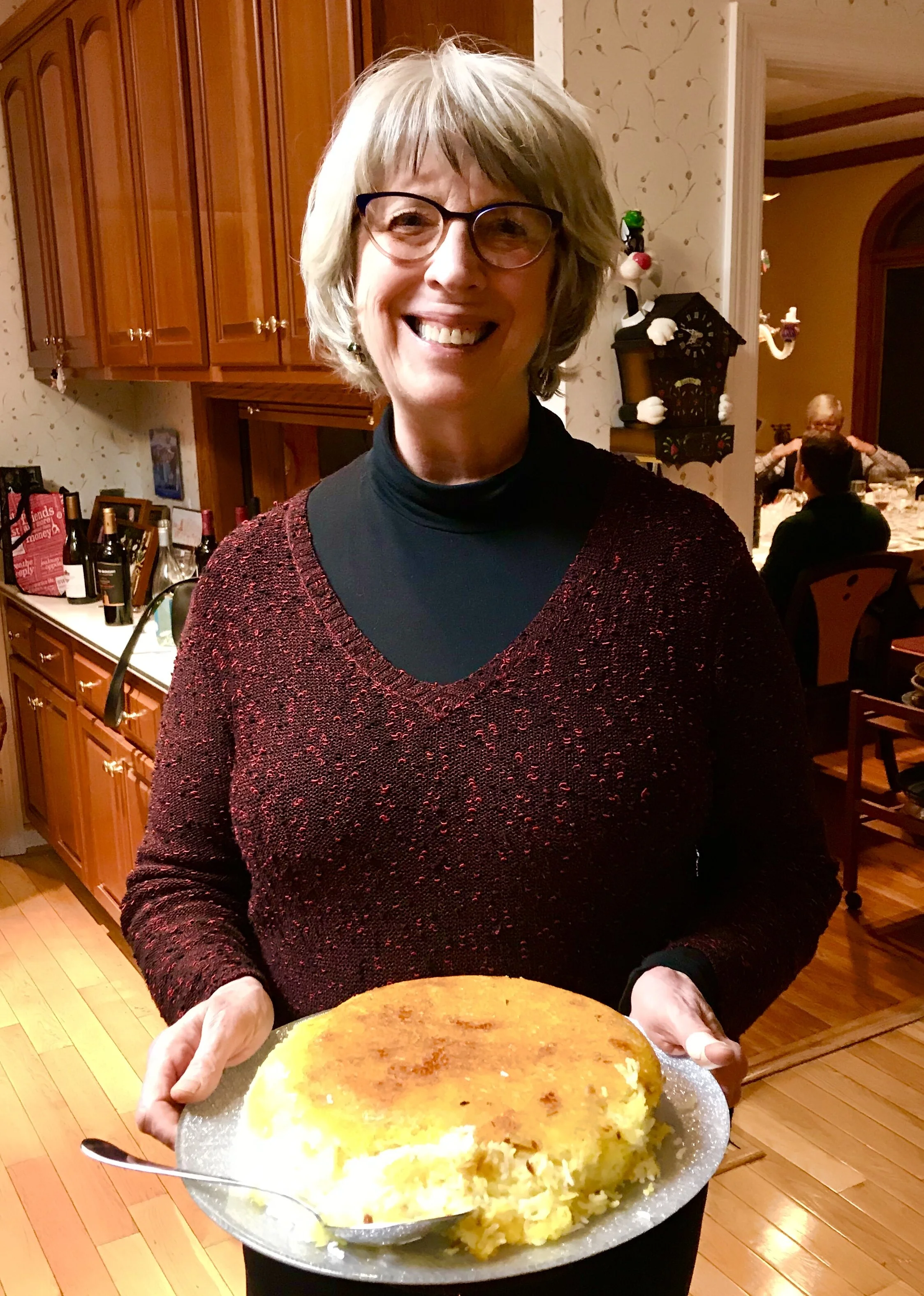Fari Farzad was a class act without even trying. She was tall and self-possessed, her dark eyes observant and warm. She did things calmly, with a minimum of fuss. She dressed in simple clothes, well-cut and of good cloth. She was beautiful; her son, who took after her, modeled for Armani for a while.
We became friends after I got to know her husband, Bahman, who was one of my photography teachers in the early ‘90s. By then, our native countries, America and Iran, had been at odds with each other for almost half a century; but Fari and Bahman and I talked more about photography and culture and family than politics.
Their daughter babysat our daughter. I edited Bahman’s book about light measurement. I loved going to their house. The family was close-knit, the hospitality gracious. I’ll never forget the first time I saw Fari set a platter of Persian rice on the table: it looked like a round, single-layer cake, the “icing” a crispy golden crust, the rice within fluffy, the grains separate instead of stuck together in a gluey mass. The crust, called tahdig, is considered a delicacy, and Fari always made sure I got plenty of it. She loved that I loved her cooking.
After my family moved to a city a few hours away, we kept in touch with phone calls and visits, but as the years went by we drifted apart. Bahman unexpectedly passed away in 2016. Fari followed the next year. As my husband and I drove to Birmingham for her service, I was devastated, having learned only a few days before that she had been suffering from ALS.
~ ~ ~
My husband and I are in a supper club with five other couples. We take turns hosting, and the host, who prepares the main dish, picks the cuisine. It’s almost always international, the idea being to try new food and learn new cooking skills. When the hosts decide to ring in 2020 with Iranian food, I volunteer to make Persian rice.
I want to remember Fari by making something she made for her family and friends. I regret that I never asked her to show me how. I regret that we drifted apart. She was on my mind for weeks before she died, and I kept thinking of calling her, and I regret that I didn’t.
I watch video after video on YouTube, surprised to find so many Iranian men making rice. But I’m looking for a recipe—though Persian rice is more of a technique than a recipe—that I imagine to be like Fari’s was. It has to be simple, elegant, unfussy. I end up cobbling instructions from two videos together.
My husband helps me make the rice. I weep as I grind the saffron in the small marble mortar Fari gave me after her first trip back to Iran. The cooking technique is so different from what I’m used to, I worry that I won’t be able to get that delicious golden crust. As I go through the steps, I remember that Fari always covered the pot with a cloth before putting on the lid. I feel like I’m getting to know her, and her culture, in a way I haven’t before. Persian rice is slow food. I tell myself to be patient. If I can bring forth a bit of Fari’s calm, I’ll get some kind of crust.
It’s getting late, so I put the pot in a box and set it on the stove as soon as my husband and I arrive at the host’s house. A young Iranian woman is among the guests that evening; she suggests I turn up the flame a bit. About ten minutes later, I can tell by the aroma that the rice is done. Holding our breath, the young woman and I turn the pot onto a platter. The crust is a crispy golden brown. She tells me that my tahdig came out better than hers ever has. I tell her it’s not mine. It’s Fari’s.
Fari’s Persian Rice
Ingredients
½ c. boiling water
¼ tsp. saffron (2 pinches)
2 ½ c. basmati rice
Enough water to cover the rice
1 T. salt
Directions
Grind saffron with a mortar in a small pestle if you have one. (If not, don’t worry about it.)
Add saffron to the ½ cup of boiling water.
Set aside for about 10 minutes.
Combine rice, salt, and enough water to cover the rice by about an inch in a large non-stick pot.
Bring to a boil, cover, and keep boiling for 6 minutes. (This is called parboiling!)
Drain rice in a sieve, and rinse well with cold water.
Melt 2 T. butter with 4 T. olive or grapeseed oil.
Add it to the saffron water and mix well.
Pour ¼ of saffron mixture into the bottom of the pot. (This makes the tahdig.)
Then add a layer of rice and pour some saffron mixture over it. (It won’t cover the whole layer.)
Repeat until rice and saffron mixture are finished.
Make several holes in the rice with the handle of a wooden spoon. (This allows steam to escape.)
Cover with 2 or 3 paper towels, then put the lid on. (The towels absorb the steam.)
Cook for 15 minutes on Med-Low if your burner runs hot, Med if it doesn’t.
Then reduce to Low and cook for an hour.
Turn the rice onto a platter.
This is delicious with roasted chicken and vegetables.
“Vivamus pellentesque vitae neque at vestibulum. Donec efficitur mollis dui vel pharetra.”

